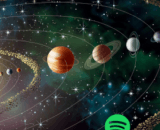
 MIDiA Research, recently launched by Mark Mulligan, has completed a study examining the characteristics, attitudes, and behavior of “digital natives.” The focus is mostly how they approach music.
MIDiA Research, recently launched by Mark Mulligan, has completed a study examining the characteristics, attitudes, and behavior of “digital natives.” The focus is mostly how they approach music.
First, what are digital natives? “Natives and Immigrants demarcate the digital world” — that is the study’s framework. Digital immigrants are older, and have replaced old analog media consumption with digital alternatives. Digital natives are younger, and have never known a world without online connectivity and unlimited content. Understanding the mindset and decisions of that demographic can shine light into the future of listening.
“It is the attitudes and behaviour of the Natives that give us the best indication of how the digital music market will evolve.”
Online music (both Internet radio and music video) is revealed to be the most widespread for natives, with 69% penetration.
One key conclusion is that digitally native behavior is changing faster than music industry products. A few examples from the study summary:
- Streaming music is the “digital music zeitgeist” for digital natives.
- “They are pirates”: New types of peer-to-peer file-sharing are popular, with YouTube rippers called out for special mention
- A large portion of digital natives do not pay for streaming music because YouTube’s free platform satisfies their needs.
That last point suggests that YouTube will gradually emerge from being the “gorilla in the room” of streaming music, and simply become the gorilla as the Digital Native population grows in percentage. YouTube is addressing its unofficial role as the world’s most important music service with its upcoming subscription product, which will be a formal separation of music content targeted to its billion-plus users. But the MIDiA Research study implies that if digital natives own the future, they will equip themselves with personal tools for separating YouTube’s music. If so, YouTube’s plan will mainly be for a continually shrinking cohort of digital immigrants.






